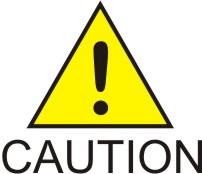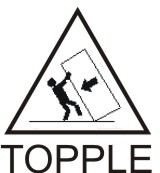1 Introduction
This chapter contains general information, such as an overview of the manual, how the manual is organized, and how to get technical assistance.
Overview
This manual provides information about using the Oracle Communications LSMS graphical user interface (GUI), using the LSMS command line, managing NPAC relations, managing locally provisioned data, report generation, and logs and measurements.
Documentation Admonishments
Admonishments are icons and text throughout this manual that alert the reader to assure personal safety, to minimize possible service interruptions, and to warn of the potential for equipment damage.
Table 1-1 Admonishments
| Icon | Description |
|---|---|
 |
Danger: (This icon and text indicate the possibility of personal injury.) |
 |
Warning: (This icon and text indicate the possibility of equipment damage.) |
 |
Caution: (This icon and text indicate the possibility of service interruption.) |
 |
Topple: (This icon and text indicate the possibility of personal injury and equipment damage.) |
Manual Organization
The Database Administrator's Guide includes:
-
Introduction contains general information, such as an overview of the manual, how the manual is organized, how to get technical assistance, and a list of related documentation.
-
Database Administration Overview contains LSMS overview information, an overview of database functions, describes the use of the LSMS command line, and how to start, use, and exit the LSMS GUI.
-
Managing NPAC Relations discusses the data that the LSMS and Number Portability Administration Center (NPAC) have in common.
-
Managing Locally Provisioned Data contains information about Element Management System (EMS) routing, custom TN filters, GTT groups, default and override global title translation (GTT), Numbering Plan Area (NPA) Splits, and input data by file.
-
LSMS Reports contains procedures for generating, viewing, and printing LSMS reports in a predefined format. It also contains information about the Report Generator, which enables you to create customized LSMS reports.
-
LSMS Logs and Measurements describes the logs maintained by LSMS and how to access, navigate, and print them.
-
unresolvable-reference.html#GUID-E0AD51E6-2AF9-4997-91EE-910A63016EE9 describes 24-hour clock conversion, explains how to calculate local time, and shows the breakdown of the world time zones expressed in hours (plus or minus) from Greenwich Mean Time (GMT).
My Oracle Support (MOS)
MOS (https://support.oracle.com) is your initial point of contact for all product support and training needs. A representative at Customer Access Support (CAS) can assist you with MOS registration.
- Select 2 for New Service Request
- Select 3 for Hardware, Networking and Solaris Operating System Support
- Select one of the following options:
- For Technical issues such as creating a new Service Request (SR), Select 1
- For Non-technical issues such as registration or assistance with MOS, Select 2
You will be connected to a live agent who can assist you with MOS registration and opening a support ticket.
MOS is available 24 hours a day, 7 days a week, 365 days a year.
Emergency Response
In the event of a critical service situation, emergency response is offered by the Customer Access Support (CAS) main number at 1-800-223-1711 (toll-free in the US), or by calling the Oracle Support hotline for your local country from the list at http://www.oracle.com/us/support/contact/index.html. The emergency response provides immediate coverage, automatic escalation, and other features to ensure that the critical situation is resolved as rapidly as possible.
A critical situation is defined as a problem with the installed equipment that severely affects service, traffic, or maintenance capabilities, and requires immediate corrective action. Critical situations affect service and/or system operation resulting in one or several of these situations:
- A total system failure that results in loss of all transaction processing capability
- Significant reduction in system capacity or traffic handling capability
- Loss of the system’s ability to perform automatic system reconfiguration
- Inability to restart a processor or the system
- Corruption of system databases that requires service affecting corrective actions
- Loss of access for maintenance or recovery operations
- Loss of the system ability to provide any required critical or major trouble notification
Any other problem severely affecting service, capacity/traffic, billing, and maintenance capabilities may be defined as critical by prior discussion and agreement with Oracle.
Related Publications
For information about additional publications related to this document, refer to the Oracle Help Center site. See Locate Product Documentation on the Oracle Help Center Site for more information on related product publications.
Customer Training
Oracle University offers training for service providers and enterprises. Visit our web site to view, and register for, Oracle Communications training:
http://education.oracle.com/communication
To obtain contact phone numbers for countries or regions, visit the Oracle University Education web site: